Throughout this series on dog sports, there has been one question that I’ve asked all of the handlers and dog owners: “How important is basic obedience in your sport?” When it comes to the sport of rally obedience, there’s no question. Obedience—at an advanced, not basic level—is critical.
About rally obedience
Rally, or rally obedience, is an evolution of obedience competitions.
Rally involves all of the behaviours from obedience—heel, sit, stand, stay, come and more.
Handlers and their dogs navigate a course where they have to execute various actions. Signs on the course, usually between 10-20, tell the handlers what action to take (unlike in obedience where judges issue instructions as you proceed).
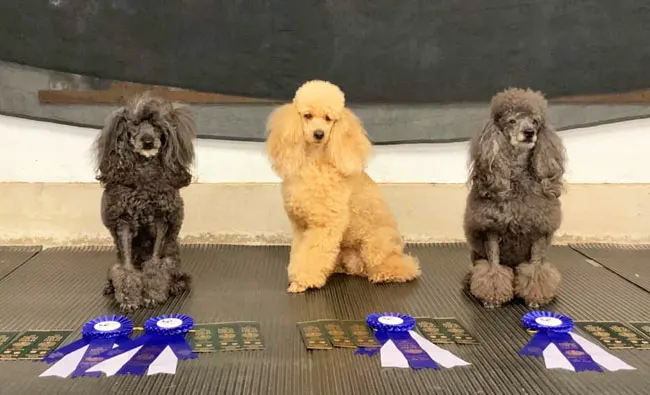
Debby DaCosta is a member of Canadian Association of Rally Obedience (CARO), a trial host and a judge in the sport. She was introduced to rally obedience in 2005 when she was looking for a new activity for her dogs, beyond Canadian Kennel Club (CKC) obedience. In the United States, the AKC also offers Rally.
“I love the versatility CARO rally obedience offers,” Debby explains.
In rally obedience, handlers are allowed to talk to their dogs and encourage them, whereas in standard obedience trials handlers are permitted only to give commands. Dogs can also receive food rewards after completing specific behaviours in rally.
There are multiple divisions for competing in rally. The core classes in (CARO) rally obedience are:
- novice
- advanced
- excellent
- versatility
- versatility excellent
“Novice” rally is done on a leash. All other classes are off leash.
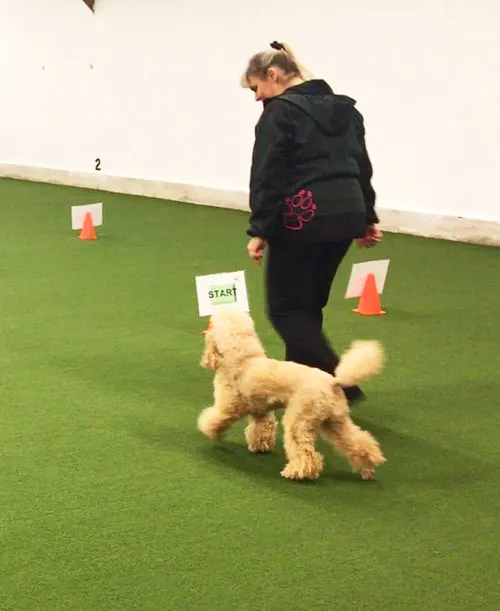
CARO also offers options for two handlers and one dog, one handler and two dogs, and a working class. As well, CARO courses can have some unique elements, such as tunnels, weaves and right side heeling (used mostly in the versatility classes).
Training your dog for rally obedience
“Heeling” is an essential behaviour in rally. This generally means the dog walks at your left side. When on a rally course, a dog is required to heel from sign to sign.
The signs tell the handler what behaviour to execute. Debby explained that some common commands are:
- sit
- stand
- down
- sit your dog and walk around your dog
- fast or slow pace while heeling
- 360 degree turns right and left
- pivots
- calling your dog to sit in front of you
- and finishes (where your dog ends up sitting at your side)
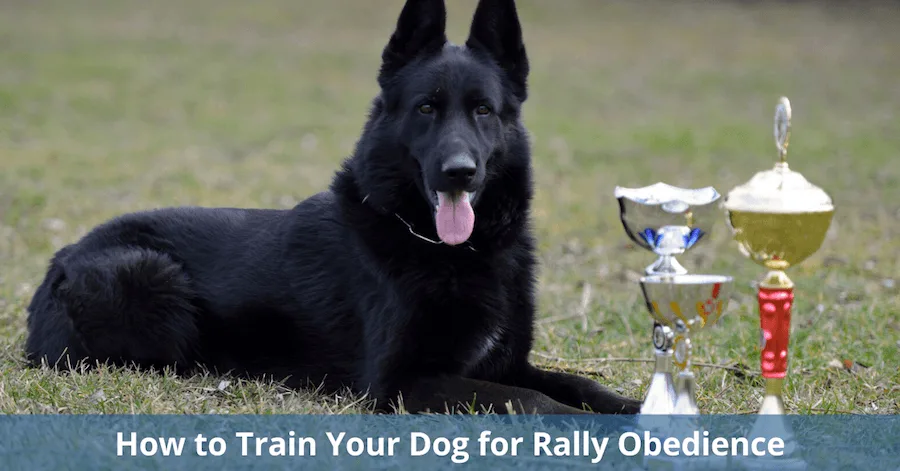
Training for rally starts with heeling on a loose leash. Then work on specific behaviours, such as those listed above.
Debby suggests that a rally club in your area is the best resource for training your dog for the sport. Club members can help you to understand the behaviours, advise you how to train your dog, show you how to move through a course, and even connect you with trainers.
Debby typically competes with two to five poodles at one trial, and she emphasizes that each dog is unique. Even though the course or the commands may be the same, each dog may react differently. “It can be a challenge to remember each of the dogs and their uniqueness when executing behaviours as some have different likes and needs,” she explains.
Working with your dog and training will help you to understand those needs and prepare for competition.
Team work
Like any activity you do with your dog, rally is about working together. Debby explains that if you’re considering rally you should be ready to work as a team and want to have fun with your dog. For her, all of the training and competition have been rewarding. “I have learned we have no limits, dream, believe and enjoy the journey.”
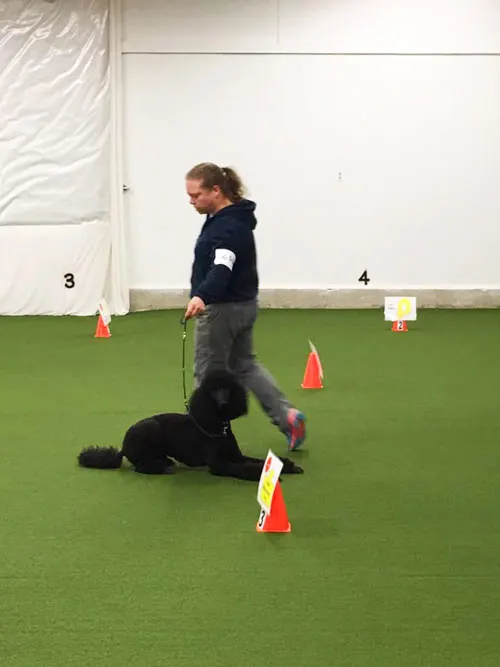
Some of her most memorable moments in the sport are the final runs with one of her poodles who is retiring due to age and/or health limitations. “Those runs you just don’t forget,” she says.
How to get involved in rally
Debby has become more and more involved with rally over her 15 years in the sport, and has become very active in growing and improving the sport. She has competed with eight poodles—toy, miniature and standard. She currently competes actively with four poodles. As well, she is a judge, offers trials and is on the executive of CARO.
Over her time in rally obedience, she has seen it become more popular here in Ontario. “As a host offering trials and a judge I am most surprised at the [growth in] class sizes over the past two years,” says Debby.
To get involved in rally, reach out to a club in your local area or contact your national organization, like CARO in Canada, or the AKC or CKC. You can also connect with a trainer near you or watch a trial near you.
Competing in rally
Competitions in rally are open. People simply need to register through the club’s website. Calendars of upcoming events are published on the association websites.
As you progress in rally, the levels and behaviours expected from your dog become progressively more difficult. For example, at the excellent class, competitors are not allowed to use food rewards, there are no retries and repeating a cue costs you points.
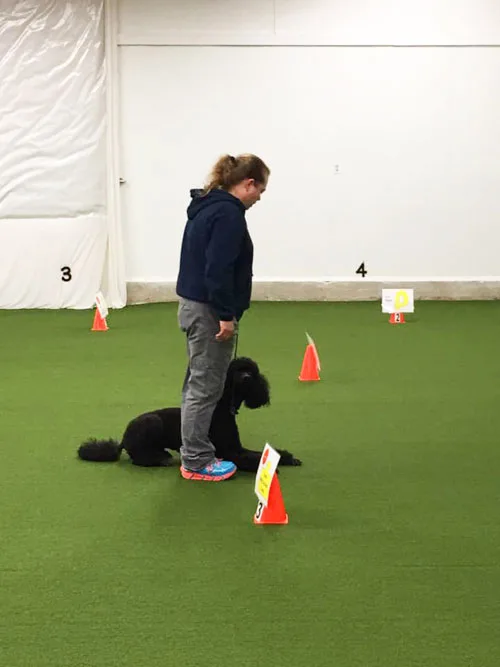
Regardless of whether you’re interested in competing, training your dog for rally obedience can be very rewarding for both you and your dog.
“Rally obedience has a lot to offer,” says Debby. “I challenge you to investigate the organization and see if there is something that interests you. Just be prepared to have fun!”
How obedient is your dog? Have you mastered any advanced obedience skills? Have you ever considered rally obedience?
What dog sports would you like to see in future posts? Let us know in the comments!
See some of our other dog sport articles:
Julia Preston writes for That Mutt about dog behavior and training, working dogs and life on her farm in Ontario, Canada. She has a sweet, laid-back boxer mix named Baxter. She is also a blogger at Home on 129 Acres where she writes about her adventures of country living and DIY renovating.
